Whether you love them or hate them, quick-time events (QTEs) have been around for an incredibly long time and has become an indispensable part of video games. They’ve appeared in plenty of renowned games such as Resident Evil, Shenmue, and God of War, and for good reasons too: They are a great way to keep players on high alert and get them involved in what are essentially cool action cutscenes. Now, Hamsterdam comes around and utilizes this mechanics to its fullest potential, resulting in an addictive and satisfying game.
Developer Muse Games is probably best known for its long-running series Guns of Icarus – a steampunk-themed multiplayer FPS. It's rather strange, then, that this new release has nothing even remotely related to steampunk, shooter, or multiplayer. You’ll instead be playing as Pimm, a lightning-quick Kung Fu Master hamster who singlehandedly takes on a gang of rodent thugs.
Still, despite the difference, it’s clear that Muse has put the same effort in Hamsterdam as it did with its flagship series. The game basically takes you back to the golden era of martial arts movies, when our young protagonist outgrows his mentor and rises to the challenges, eventually managing to overcome the overwhelming odds and coming out on top in a series of fast-paced brawls.
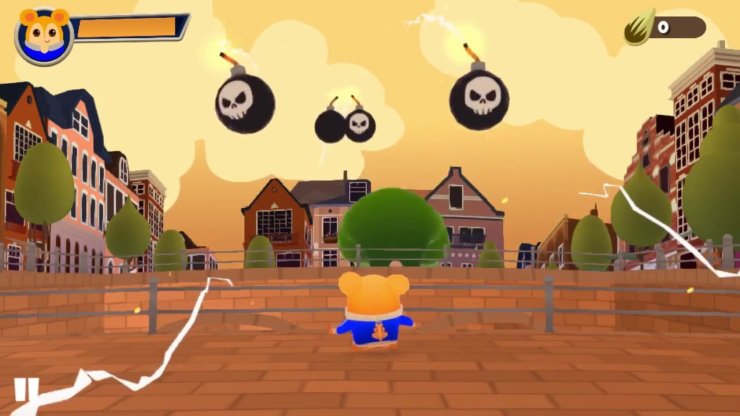
But the most impressive thing about Hamsterdam isn’t its action, but the incredible camera work. Every moment of the QTE-focused combat is carried out via player-led animations. Even when the camera focuses on Pimm as he slams an enemy face-first into the ground, you can still tap on the items on the ground. Hamsterdam doesn’t feel like a series of inputs sewn together by some footages. We’ve seen any other games that attempt to channel the hyperactive vibe of the classic Saturday-morning cartoons rely too heavily on the over-the-top animations and end up feeling a bit off due to input lags – but that’s not the case with Hamsterdam.
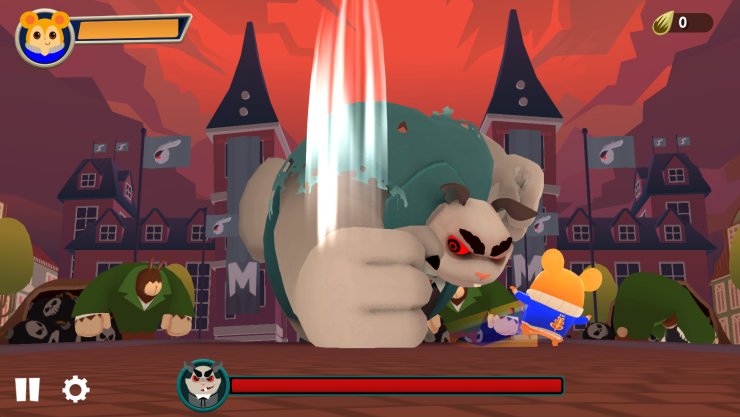
Stringing all of the actions together involves some cute mechanics. Sure, you can beat most opponents simply by tapping mindlessly on the screen and occasionally swiping to block, but if you take a more calculated approach, you’ll see that there's a 'perfect' system in which you can try to put in the appropriate action based on an indicator. If you pull off enough of these, you'll deal additional damage and also gradually charge a KO button. Once that button is full, you can unleash a devastating attack to wreck enemies. This loop feels incredibly rewarding, and it makes you feel like you’re playing a rhythm game, which you kind of are.
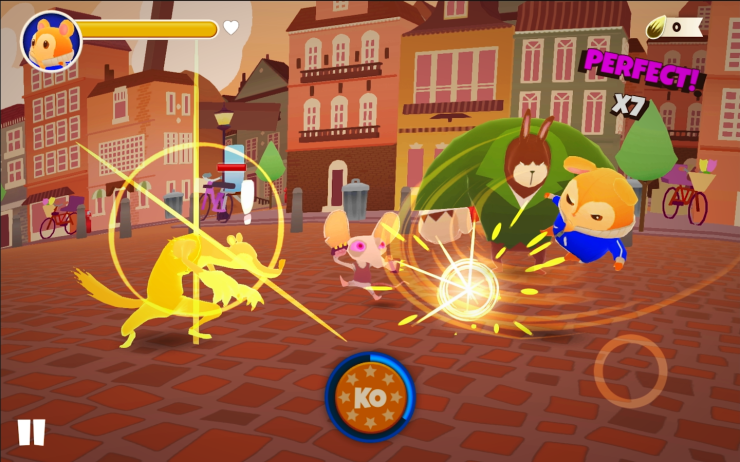
One problem with this mechanic is that enemies will actively try to reposition, forcing you to swipe them to counter their plans, breaking your combo in the process. Since many bonus challenges require you to build up these bigger blows, you’ll quickly find that it’s basically impossible to finish all 6 challenges within 1 run. As a result, it’ll be really daunting to the completionists who want to 100% everything before moving forward.
It isn’t the biggest issue with the game, though. The real problem is the gameplay loop. Hamsterdam is awesome when you play in short bursts, but if you sit down with it for an extended period of time, you’ll begin to realize that you are basically just fighting the exact same enemies and watching the exact same cutscenes play out over and over again. Once that realization kicks in, it’s hard to ignore and keep playing.
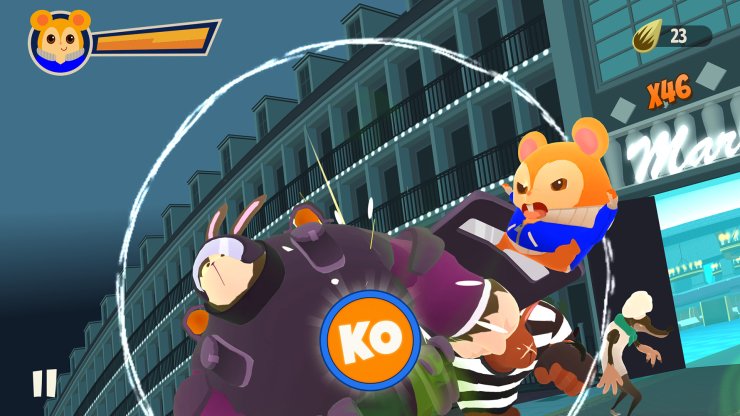
But if you just want a game to kill time during short breaks between classes, then Hamsterdam is a game that’ll stick with you for a very long time. It is now available on both Google Play and the App Store.


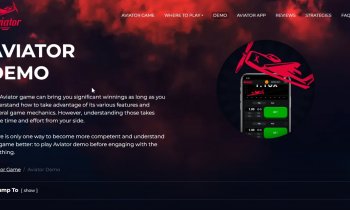













Comments